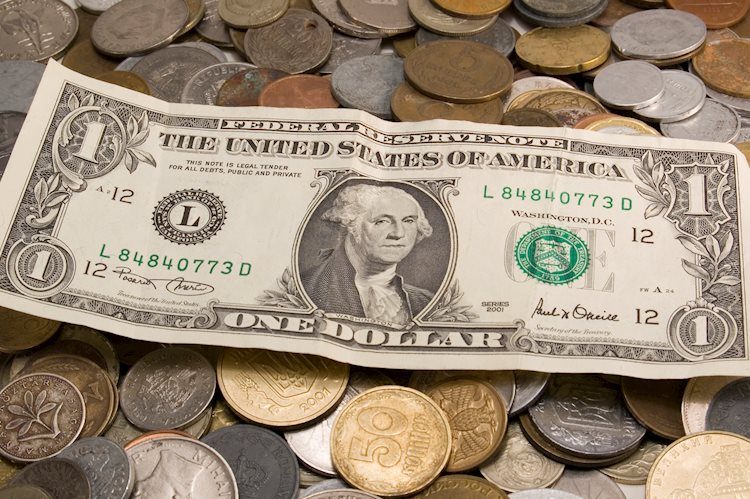- The DXY Index stands at 103.90, seeing losses of around 0.40% and tallying a 1.60% weekly decline.
- Investors continue to digest the data reported throughout the week.
- The combo of cooling inflation and the labor market points to the Fed not hiking anymore.
- Fed’s Susan Collins was seen as hawkish on Friday.
At the end of the week, the US Dollar Index saw red and declined to 103.90 to close a 1.60% losing week. Soft inflation figures and weak economic activity data from the US were mainly responsible for the Greenback’s decline.
As the United States economy displayed signs of inflationary pressures and the labor market cooling down, markets seemed to be cheering that the Federal Reserve (Fed) is done with hiking, causing the US Dollar to weaken throughout the week. In the next week, the US will release Durable Goods figures from October and S&P PMIs for November.
Daily Digest Market Movers: US stands soft as investors assess the week’s data
- The US Dollar Index resumed its downward movements toward 103.90.
- During the week, the US Dollar significantly weakened due to the report of soft Inflation figures and weak economic activity data.
- The US Bureau of Labor Statistics reported that October’s Core Consumer Price Index (CPI) missed the consensus. It came in at 4% YoY vs the expected 4.1% and decelerated from its previous figure of 4.1%.
- The headline figure came in at 3.2%YoY, below the consensus of 3.3% and in relation to its last reading of 3.7%.
- In addition, the Core Producer Price Index (PPI) from October fell short of expectations. It came in at 2.4% YoY vs the expected 2.7% and declined from its previous reading of 2.7%.
- On the other hand, Retail Sales from October came in better than expected, declining by 0.1% MoM vs the expected 0.3% decline.
- During the week ending November 11, the number of US Initial Jobless Claims increased to 231,000, surpassing the predicted 220,000.
- Industrial Production in the United States fell short of expectations, experiencing a 0.6% MoM decline, higher than the -0.3% expected. It also tallied a YoY decrease of 0.7%.
- On Friday, it was reported that Housing Starts and Building Permits from October came in better than expected.
- Susan Collins from the Fed commented that she wouldn’t take further tightening off the table. It will all come down to the incoming data.
- In the meantime, US Treasury yields slightly rose, with the 2-year increasing to 4.90%, while the 5 and 10-year rates rose to 4.45% and 4.44%, respectively.
- According to the CME FedWatch Tool, the odds of a 25-basis-point hike in December are zero. Markets are betting on rate cuts appearing sooner than expected in May 2024, if not March.
Technical Analysis: US Dollar bears regain the 100-day SMA, more downside on the horizon
According to the daily chart, the DXY holds a bearish technical bias as the sellers are seizing control, signaling the potential of further downward movement. The Relative Strength Index (RSI) is trending below its midline, suggesting a bearish outlook, while the Moving Average Convergence (MACD) histogram shows rising red bars.
On the broader scale, the index is below the 20 and 100-day Simple Moving Average (SMA), favoring the case of a negative outlook for the USD.
Support levels: 103.80,103.60 (200-day SMA), 103.30.
Resistance levels: 104.15 (100-day SMA),104.50, 105.00.
Interest rates FAQs
Interest rates are charged by financial institutions on loans to borrowers and are paid as interest to savers and depositors. They are influenced by base lending rates, which are set by central banks in response to changes in the economy. Central banks normally have a mandate to ensure price stability, which in most cases means targeting a core inflation rate of around 2%.
If inflation falls below target the central bank may cut base lending rates, with a view to stimulating lending and boosting the economy. If inflation rises substantially above 2% it normally results in the central bank raising base lending rates in an attempt to lower inflation.
Higher interest rates generally help strengthen a country’s currency as they make it a more attractive place for global investors to park their money.
Higher interest rates overall weigh on the price of Gold because they increase the opportunity cost of holding Gold instead of investing in an interest-bearing asset or placing cash in the bank.
If interest rates are high that usually pushes up the price of the US Dollar (USD), and since Gold is priced in Dollars, this has the effect of lowering the price of Gold.
The Fed funds rate is the overnight rate at which US banks lend to each other. It is the oft-quoted headline rate set by the Federal Reserve at its FOMC meetings. It is set as a range, for example 4.75%-5.00%, though the upper limit (in that case 5.00%) is the quoted figure.
Market expectations for future Fed funds rate are tracked by the CME FedWatch tool, which shapes how many financial markets behave in anticipation of future Federal Reserve monetary policy decisions.
